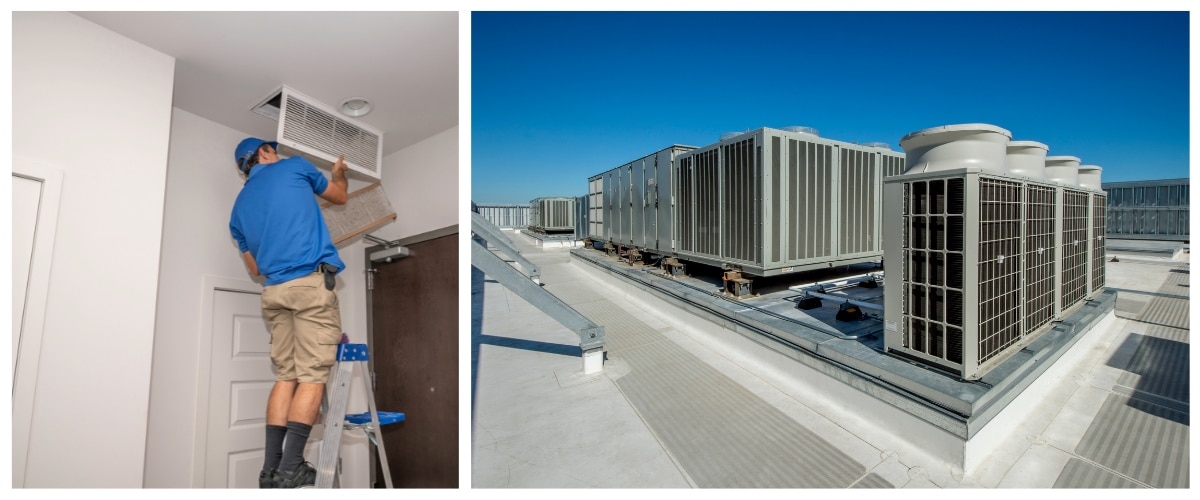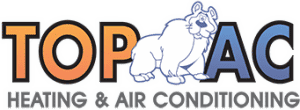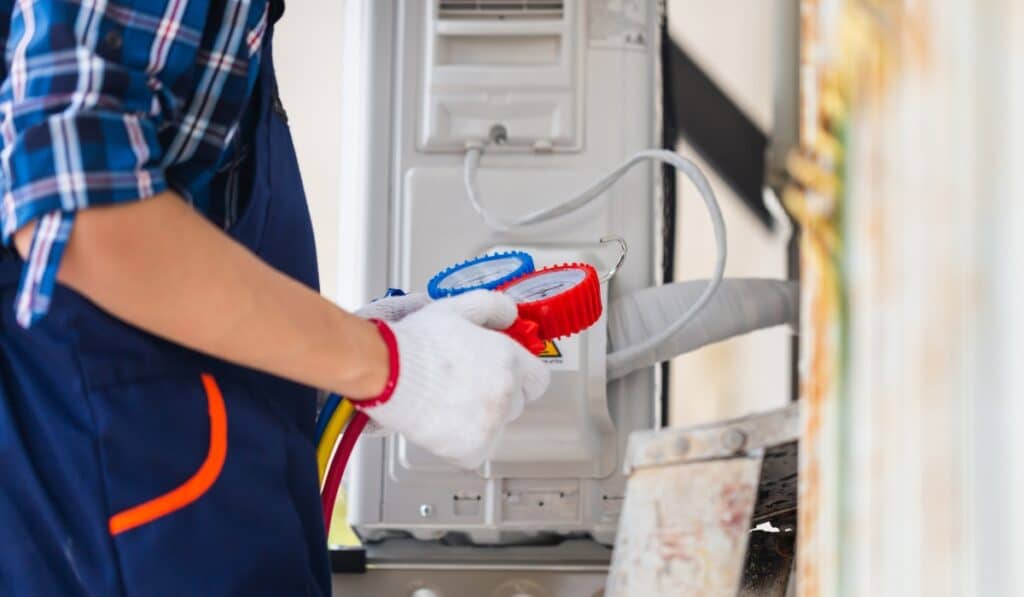Are you struggling to keep your home cool in the sweltering heat? It may be time to take a closer look at your HVAC system. The components of your HVAC system are essential in maintaining a comfortable and consistent indoor temperature, but they can also be a source of potential hazards if not properly maintained. In this blog post, we will provide you with a comprehensive guide to the key components of your HVAC system, including important tips on how to keep them running smoothly and efficiently.
Understand the Basics of HVAC Systems
Understanding the basics of HVAC (Heating, Ventilation, and Air Conditioning) systems is essential for homeowners and building occupants alike. HVAC systems are designed to regulate indoor temperature, ensure proper ventilation, and maintain air quality. The system typically comprises a furnace or heat pump for heating, an air conditioner for cooling, ductwork for air distribution, and various controls such as thermostats. Ventilation and air filtration play crucial roles in providing a healthy indoor environment. As users, knowing how these components work together empowers informed decisions about maintenance, energy efficiency, and overall comfort in the spaces we inhabit.
Common types of HVAC systems for homes

When it comes to HVAC systems for homes, there are several common types available. Each type has its own set of advantages and considerations, so it’s important to choose the one that best suits your home and your specific needs. Any experienced HVAC professional can help you assess the best option for your home. Here’s a breakdown of the different HVAC system types:
| System Type | Description |
|---|---|
| Split Systems | Consists of an outdoor unit with a compressor and condenser and an indoor unit with an evaporator. |
| Hybrid Heat Split Systems | Use a combination of gas and electricity for heating. |
| Duct-Free Systems | Ideal for homes without ductwork and allow for zoning to control various areas of the home independently. |
| Packaged Heating and Air Systems | Contain all the components in one unit and are typically installed on the roof or a concrete slab next to the home. |
| Geothermal Heating and Cooling Systems | Use the constant temperature of the earth to provide heating, air conditioning, and hot water. |
Key Components of the HVAC System
Heating, Ventilation, and Air Conditioning (HVAC) systems are intricate systems designed to create and maintain optimal indoor environments. Comprising various components, each with a specific role, these systems work seamlessly to ensure comfort and air quality. Let’s dive into the key components that constitute an HVAC system.
1. Furnaces: The Heating Powerhouse
At the heart of the heating aspect of HVAC systems are furnaces. These devices, often powered by gas, oil, or electricity, generate heat to warm the air. The heated air is distributed throughout the building via ductwork, ensuring a cozy and comfortable indoor atmosphere during colder seasons.
2. Air Conditioners: Cooling Precision
When it comes to cooling, air conditioners take the spotlight. These units use a refrigeration cycle to remove heat from indoor air, leaving behind more excellent, dehumidified air. Whether in the scorching summer heat or for year-round comfort, air conditioners play a crucial role in maintaining a pleasant indoor temperature.
3. Heat Pumps: Versatile Temperature Control
Heat pumps provide a dual function in both heating and cooling spaces. Operating similarly to air conditioners, they can reverse the refrigeration cycle to extract heat from the outdoor air and bring it inside during colder months. This versatility makes heat pumps an energy-efficient and space-saving solution for year-round comfort.
4. Ductwork: Airflow Infrastructure
Ductwork forms the circulatory system of an HVAC system and is responsible for distributing conditioned air throughout the building. Well-designed ducts ensure even airflow and temperature control in every room. Regular inspection and maintenance are vital to prevent blockages and maintain optimal system efficiency.
5. Ventilation Systems: Fresh Air Exchange
Ventilation is critical for maintaining indoor air quality. Ventilation systems introduce fresh outdoor air while expelling stale indoor air, preventing the buildup of pollutants and ensuring a healthy living environment. Proper ventilation removes allergens, pollutants, and odors from indoor spaces.
6. Thermostats: Precision Temperature Control
Thermostats act as the control center for HVAC systems, allowing users to set and regulate indoor temperatures. Advanced thermostats, including intelligent and programmable models, allow users to schedule temperature changes, optimize energy consumption, and control the system remotely for maximum convenience.
7. Filters: Purifying the Air
Air filters are crucial in maintaining indoor air quality by capturing dust, allergens, and pollutants. Regularly changing or cleaning filters is essential to ensure efficient system operation and prevent the circulation of contaminants, promoting a healthier living environment.
8. Compressors and Fans: Driving the System
Compressors and fans are the workhorses of HVAC systems. Compressors in air conditioners and heat pumps pressurize and circulate refrigerant while fans distribute conditioned air. Regular maintenance of these components ensures optimal efficiency and prevents breakdowns.
Understanding these key components provides insight into HVAC systems’ complex and interconnected nature. Regular maintenance, professional inspections, and a focus on energy efficiency are crucial for ensuring these components’ longevity and optimal performance, ultimately contributing to a comfortable and healthy indoor environment.
Tips to Maintain Your HVAC for Optimal Cooling

Despite having a reliable HVAC system in place, it is essential to maintain it properly to ensure optimal cooling in your home. Regular maintenance not only extends the lifespan of your system but also improves efficiency, which can save you money in the long run. Here are some important tips to help you maintain your HVAC system for optimal cooling:
- Regular inspections and maintenance are crucial for the smooth operation of your HVAC system. This includes checking for leaks, cleaning coils, and lubricating moving parts. You can also consider scheduling a professional maintenance check at least once a year.
- Keep the outdoor unit clean and unobstructed to ensure proper airflow. Trim any vegetation or debris around the unit and make sure it has at least two feet of clearance on all sides.
- Check and clean the air ducts to remove any dirt, dust, or debris that may block airflow and reduce the system’s efficiency.
How to Clean and Manage the Furnace
Regular cleaning and maintenance of your furnace is crucial for its efficient operation. Make sure to clean or replace the air filters regularly to prevent dust buildup and maintain good indoor air quality. Additionally, inspect the blower motor and belts for any signs of wear or damage and clean the blower assembly and combustion blower.
Practical Tips for Optimal Use of the Thermostat
After ensuring your thermostat is properly calibrated, you can optimize its use by setting programmable temperature settings that match your daily routine. You can also consider upgrading to a smart thermostat for greater control and energy savings.
- Avoid setting the thermostat too low or too high as it can lead to excessive energy consumption and strain on your HVAC system.
- Regularly check the thermostat’s batteries and replace them as needed to avoid any malfunctions.
After following these practical tips, you can ensure your thermostat is contributing to the efficient operation of your HVAC system.
Keep Your Home Cool and Comfortable
Decoding the comfort provided by HVAC systems requires a holistic understanding of their vital components. From the heart of the system with furnaces and heat pumps to the future trends shaping HVAC technology, this guide has covered it all. Remember, ensuring the longevity and efficiency of your HVAC system requires regular maintenance, and for the best AC repair and HVAC maintenance services in Los Angeles, CA, look no further than TOP AC Inc. With a commitment to excellence, they stand as the go-to choice for all your HVAC needs.

